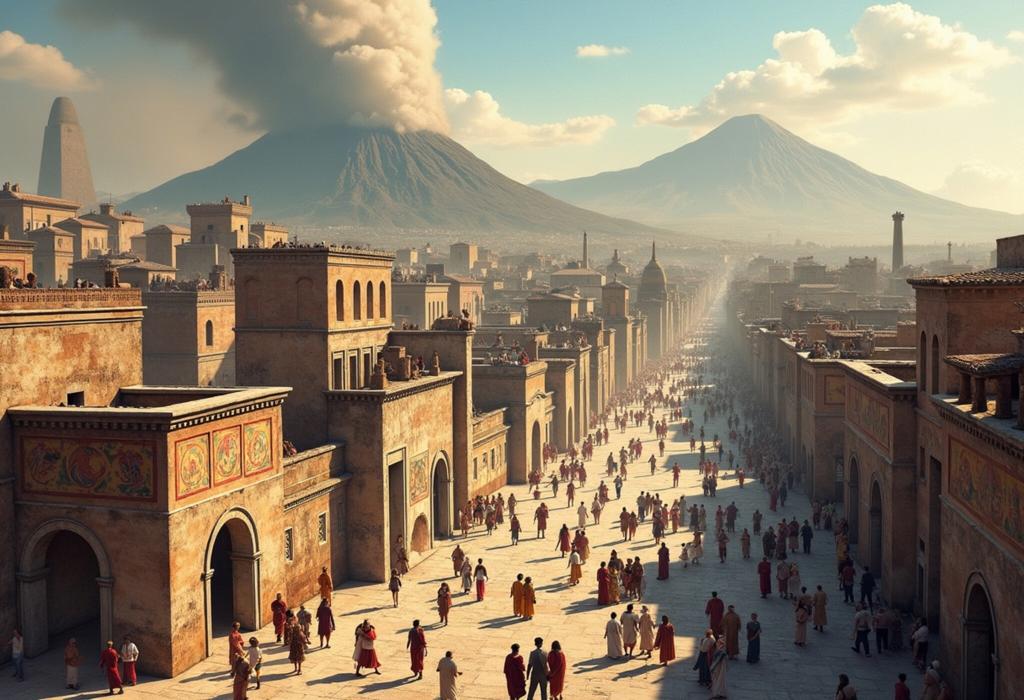For more details on this content, please review the step-by-step guide and frequently asked questions.
The Legacy of Pompeii: Lessons from a Buried City

Step-by-Step Guide
Introduction to Pompeii
Pompeii was a thriving city of the Roman Empire, located near the Bay of Naples in Italy. It was famously buried under volcanic ash and pumice in AD 79 when Mount Vesuvius erupted. This catastrophic event provides modern society with invaluable lessons about disaster preparedness, urban planning, and the importance of historical preservation.
The Eruption of Mount Vesuvius
On August 24, AD 79, Mount Vesuvius erupted, sending a dense cloud of stones, ash, and fumes into the atmosphere, reaching a height of 33 km (20.5 mi). The ensuing eruptions buried Pompeii under 4 to 6 meters of volcanic ash, leading to the city's abandonment and preservation in time.
Archaeological Discoveries
Excavations of Pompeii began in the 18th century, revealing remarkably preserved buildings, artifacts, and frescoes. These findings have provided a glimpse into Roman daily life, culture, art, and urban architecture. The preservation of organic materials, such as food and clothing, has allowed for detailed studies of the past.
Pompeii’s Urban Planning
The layout of Pompeii illustrates advanced Roman urban planning principles, with a standard grid layout, public spaces, streets, and buildings organized efficiently. Each home had access to water supply systems, and public baths served as social hubs, showcasing community life in the city.
Lessons on Disaster Preparedness
Pompeii serves as a crucial case study in disaster preparedness. Understanding the geological risks associated with living near volcanoes is vital for modern cities. Implementing early warning systems, public education on evacuation protocols, and emergency response plans can mitigate the impact of natural disasters.
Art and Culture in Pompeii
The art and culture found in Pompeii, from murals and sculptures to mosaics, reflect the societal values and daily life of its inhabitants. Detailed depictions of mythology, rituals, and daily activities provide cultural insights, making it a rich source for historians and artists.
Lessons on Preservation
Pompeii highlights the importance of preserving historical sites. Conservation efforts are necessary to protect the remnants from natural degradation and human impact. Sustainable tourism management and educational programs emphasize the need for respect and awareness of cultural heritage.
Modern Implications of Pompeii
The legacy of Pompeii continues to influence urban development, safety regulations, and conservation strategies worldwide. Scientists study the eruption's effects to create better threat models for living around volcanoes. The lessons learned from Pompeii inform how modern communities address and respond to natural disasters.
The Role of Technology in Preservation
Modern technology, including 3D imaging and drone surveys, plays a crucial role in surveying and preserving sites like Pompeii. These advancements allow archaeologists to document findings accurately, study deterioration processes, and develop targeted conservation strategies.
Visitor Education and Experience
Responsible tourism and visitor education are essential in maintaining the integrity of Pompeii. Informative guides, interactive exhibitions, and virtual tours can enhance visitor experience while teaching the importance of cultural preservation and respect for history.
Conclusion: The Legacy Lives On
Pompeii's legacy extends beyond its ruins; it reminds us of the complexity of human life, our vulnerability to natural disasters, and the value of preserving our history. The city teaches us to respect our past and prepare for the future responsibly.








